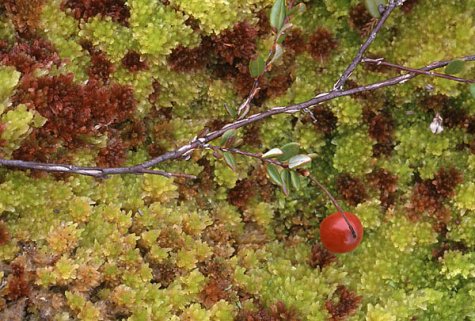Go cranberry picking whenever weather allows
Photo: Arne Ader
Translation: Liis
Cranberry and sphagnum moss
Cranberry Harilik jõhvikas Oxycoccus palustris
In the habitats of cranberries – open bogs and bog verges - there is space, peace and a mysterious early autumn quiet.
Let us look at the creeping and thin-stemmed dwarf bush of the cranberry. The Estonian name, jõhvikas, is derived from the slender, hairlike stalk that joins the berry to the plant stem – jõhv (horsehair), jõhvikas.
The first-year stems of a cranberry stand are herbaceous, in the second year they lignify and begin to flake as can be seen on the older branches of other shrub species. Cranberry leaves are evergreen, stiff and glossy, length less than a centimetre.
The berries ripen in mid-September and from then onwards there is sense in picking the valuable cranberries. The taste of berries picked too early and left to after-ripen will be poorer, and their value small. Berries that have been exposed to repeated frosts taste better as a morsel to put in your mouth.
In a hectare of good habitat up to a ton of berries can ripen in a „cranberry year“.









